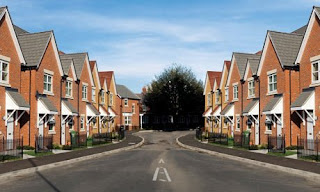Customization with a Price
I found Habraken’s “Questions That Will Not Go Away” very insightful when understanding how to best approach the design of ‘everyday life,’ specifically the places where people reside. A question that came to mind for me in this reading was ‘is customization truly equitable or a privilege?’ We have seen some great examples in the last few lectures of affordable social housing that allows for user agency of the design of the space – their home. I often hear from peers how much they enjoy residential work because of the creativity and excitement it offers as a designer, but I can personally say none of these testimonies I have heard come from those working on multi-family or affordable housing projects, rather private, luxury single-family residences. I do not think by any means this is a fault of architects alone. Unfortunately, our society’s obsession with commodity has led to issues like these, where true customization is most available to a wealthier class. I am curious what others’ thoughts on this may be, especially those who may have worked on these different types of residential projects.


Your point is very interesting, Kelsey. It shows the disparity between a single family home and a multi family unit that doesn't get highlighted often. It reminds me of the Alavera project discussed in class, which could be an answer to this problem. The idea of multiple units that can be customized as if it was the idea of the luxury single family home. It provides a blank canvas for the resident to do what they want.
ReplyDeleteI enjoyed your post Kelsey and the questions you asked. I often find myself conflicted by this dilemma. Materials, land, time, and labor are fundamental resources and energy necessary to build something which are inseparable from having some form of value throughout all of human history. Those with greater access to these resources have always and will always be more appealing to designers as they get to work with less constraints and they usually get paid more. I have trouble seeing how this fundamental relationship between the effort of building something and the values we place on that process could ever be equitable. Despite this, I think a major takeaway from last few lessons is that customization does not at all have to be a privilege to only those with deep pocket. When working with less availability to resources though you are simply faced with the fact of a more constrained design. It will be more challenging for the designer and it requires a greater level of creativity but when successful I think most of us agree that these projects are usually more interesting than the projects with unlimited budgets and very little constraints. I think another aspect of why architects and designers do not tend to go this route it that is sometimes requires a greater sense of philanthropy and many are struggling to survive themselves, especially fresh out of school with big loans to pay off.
ReplyDelete